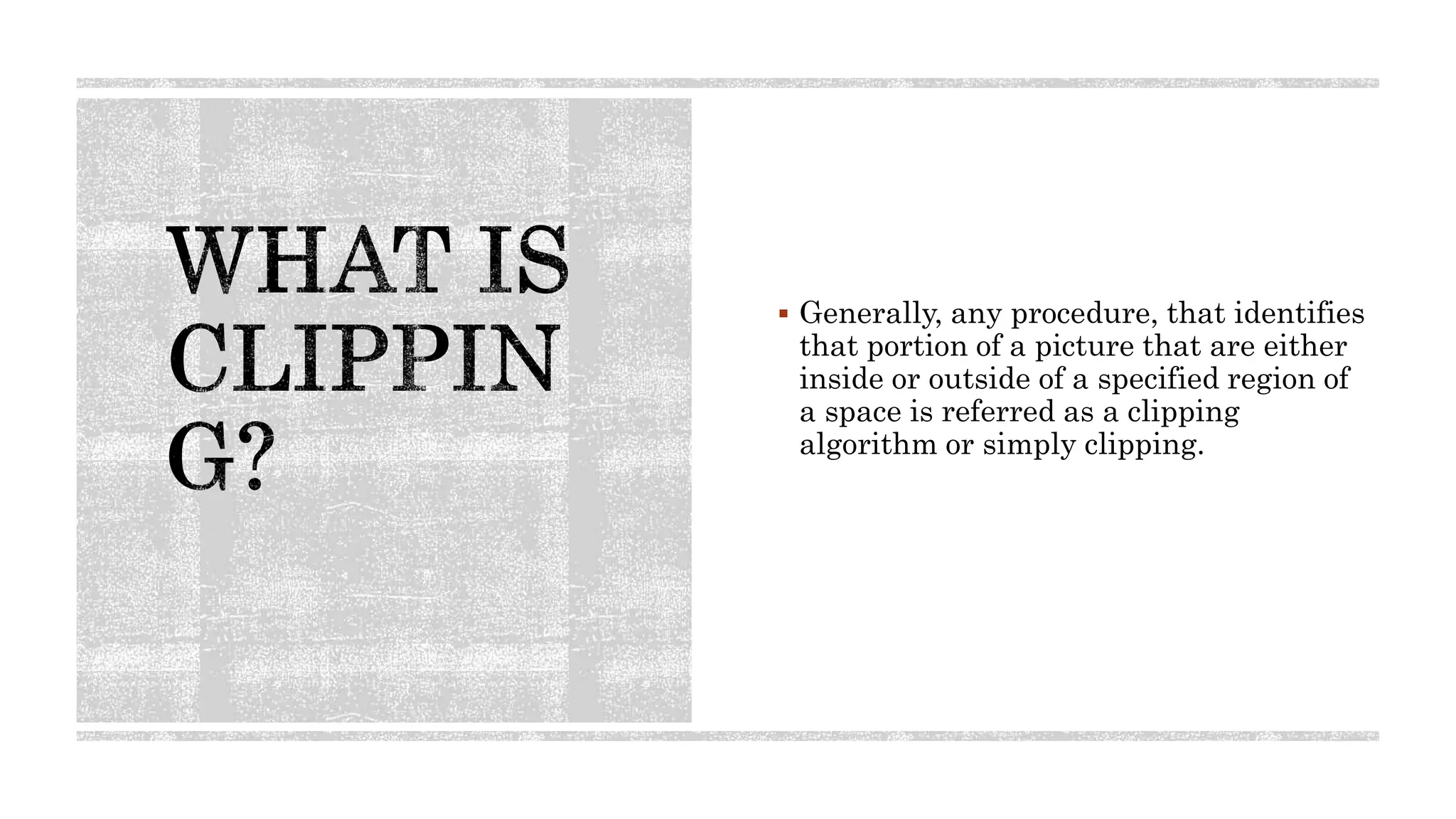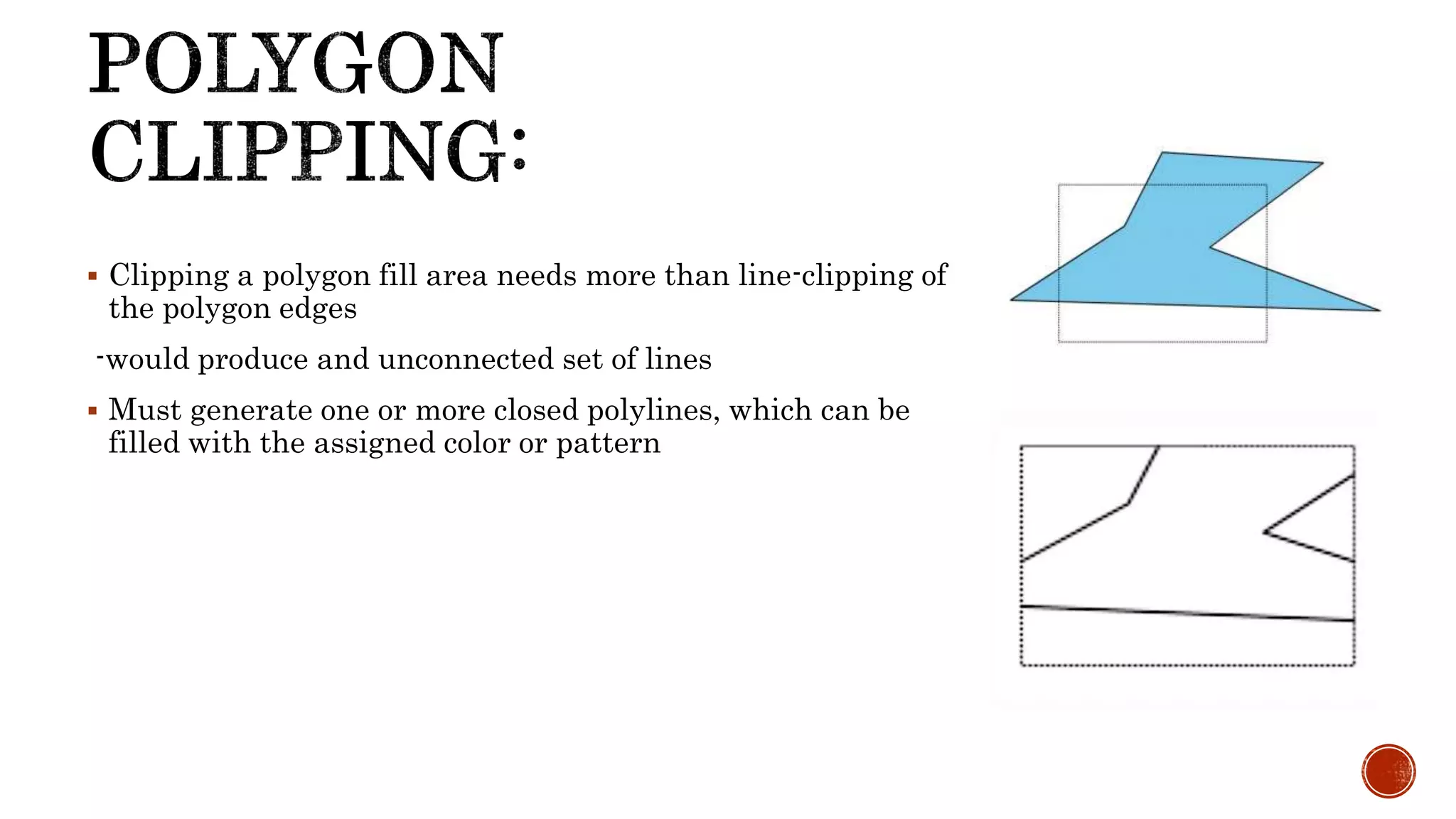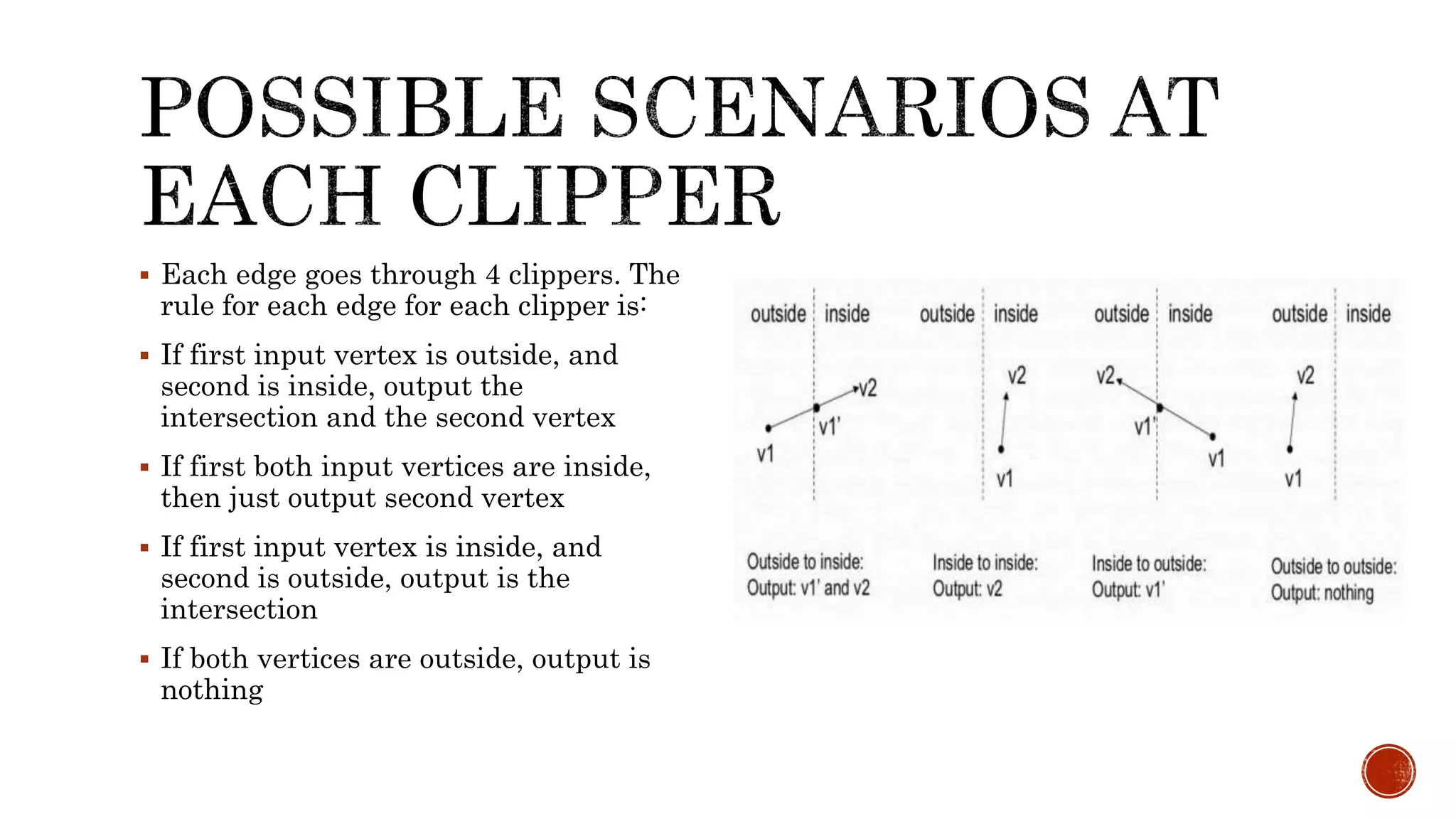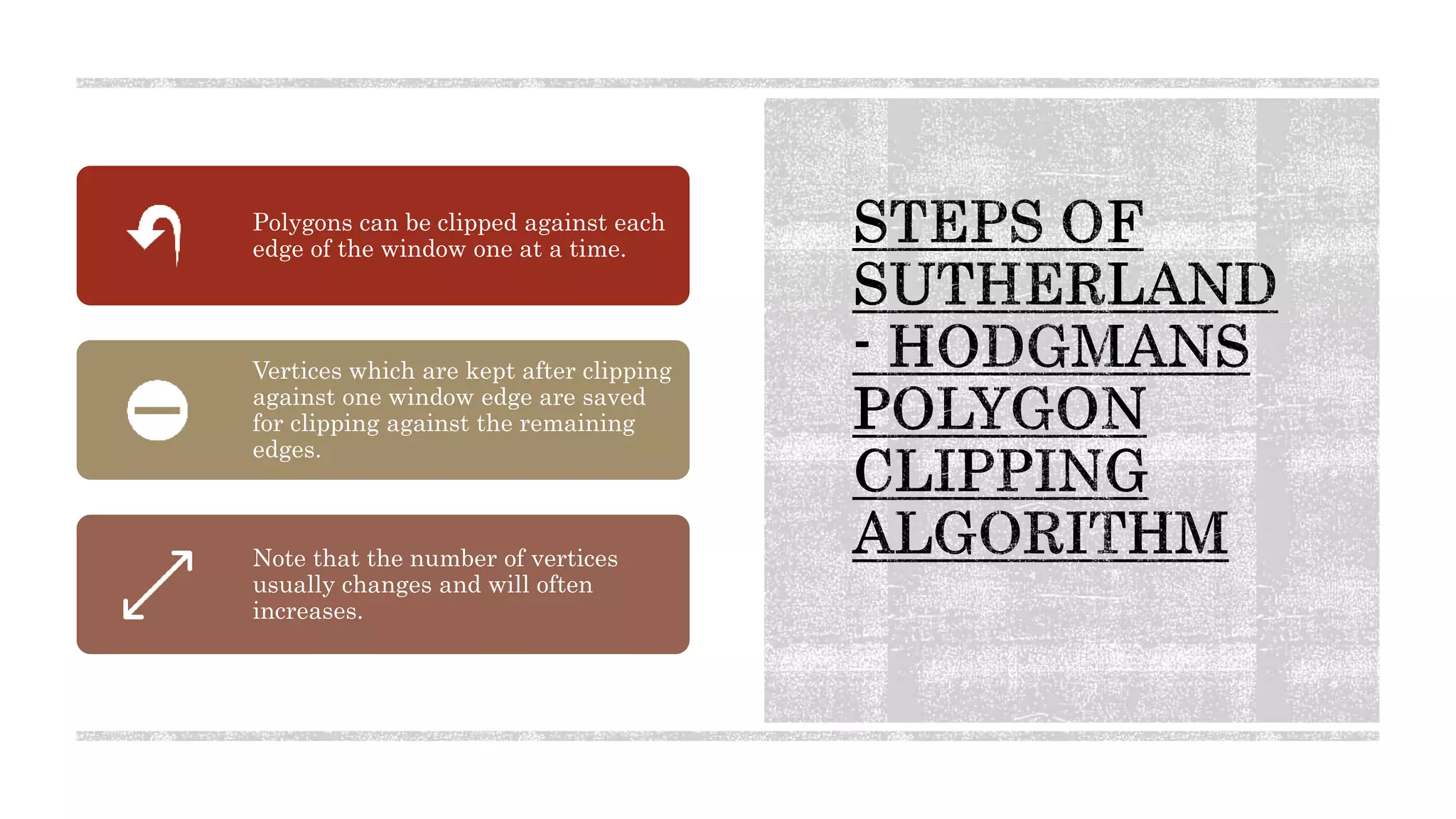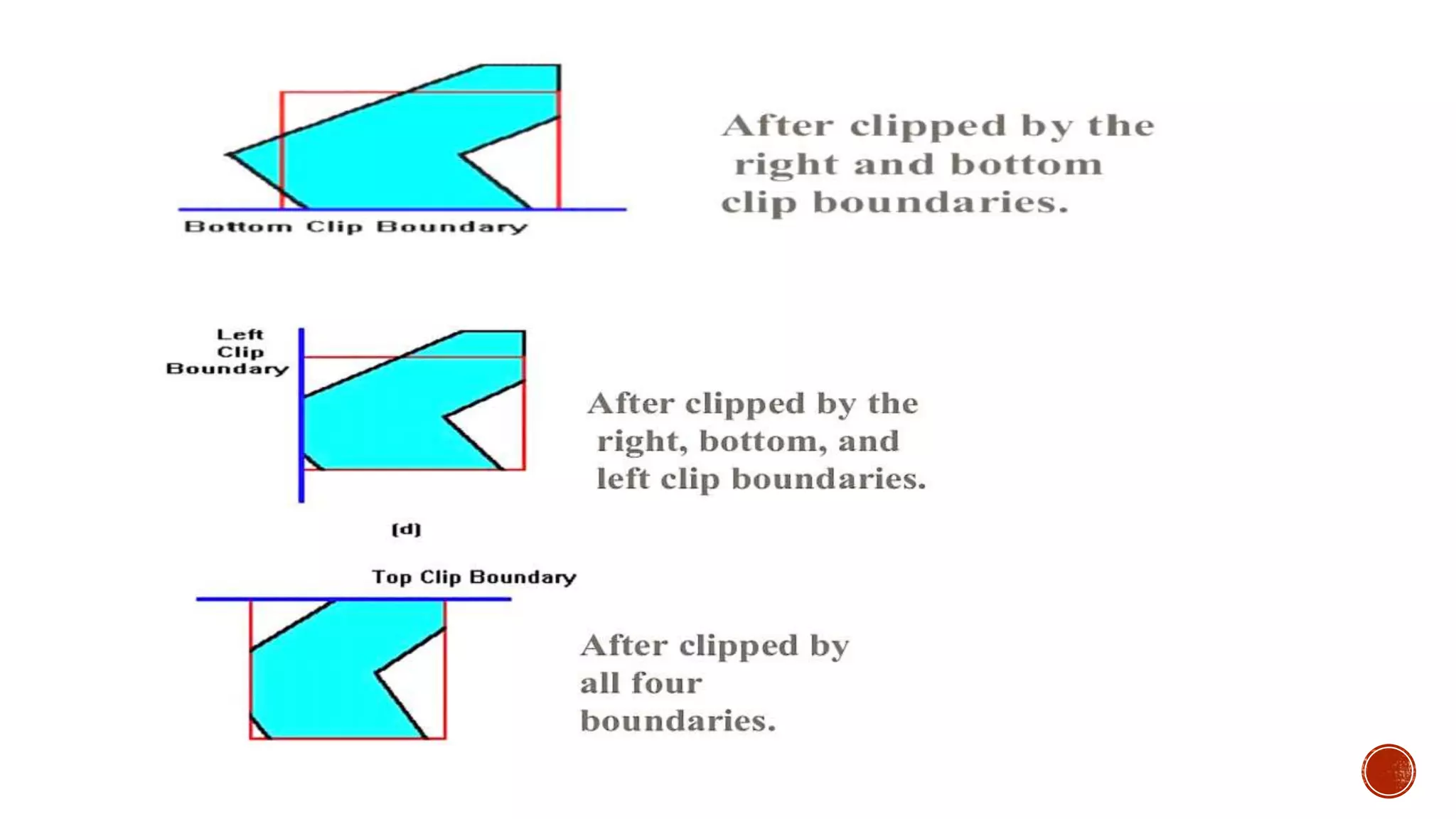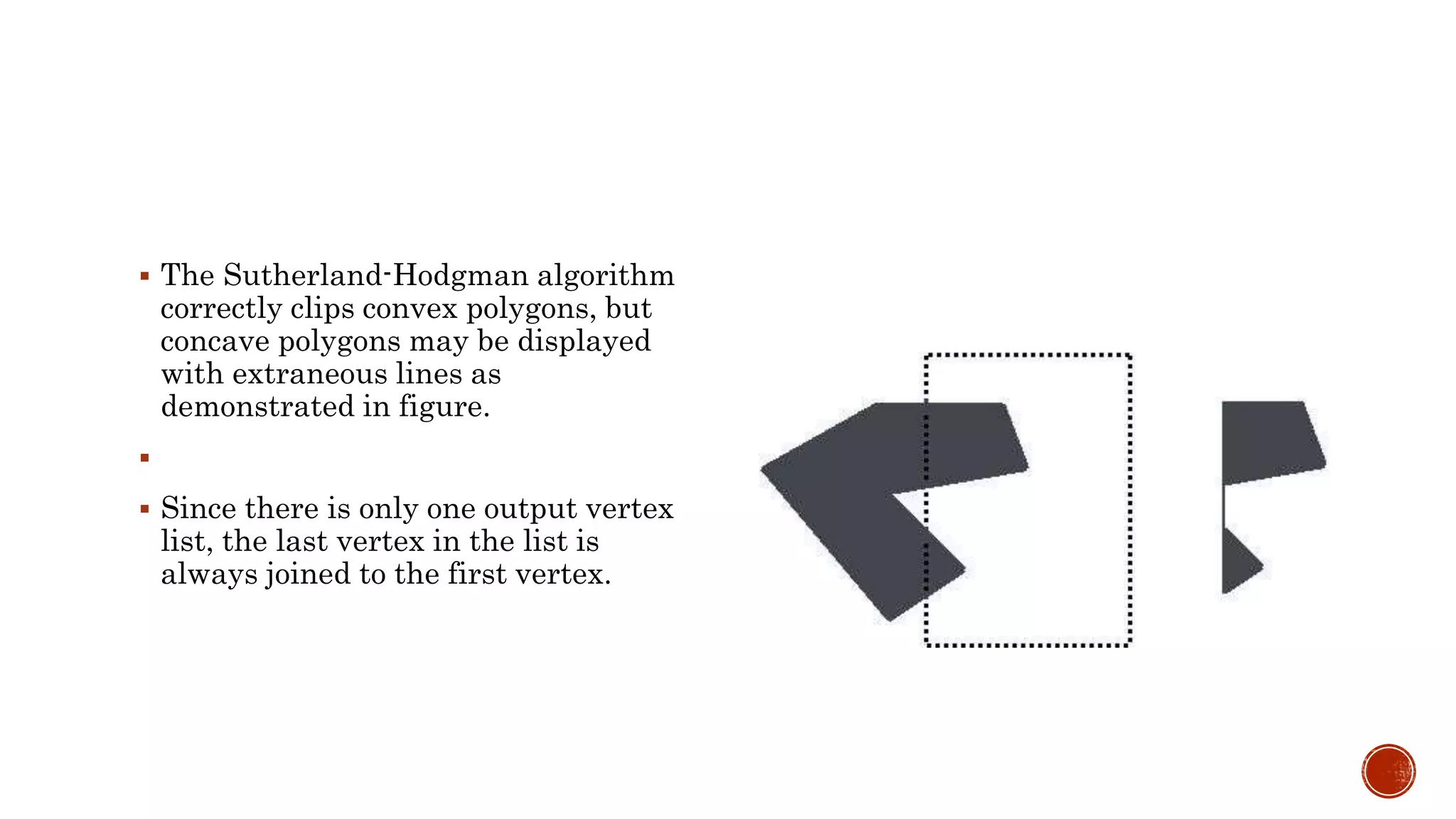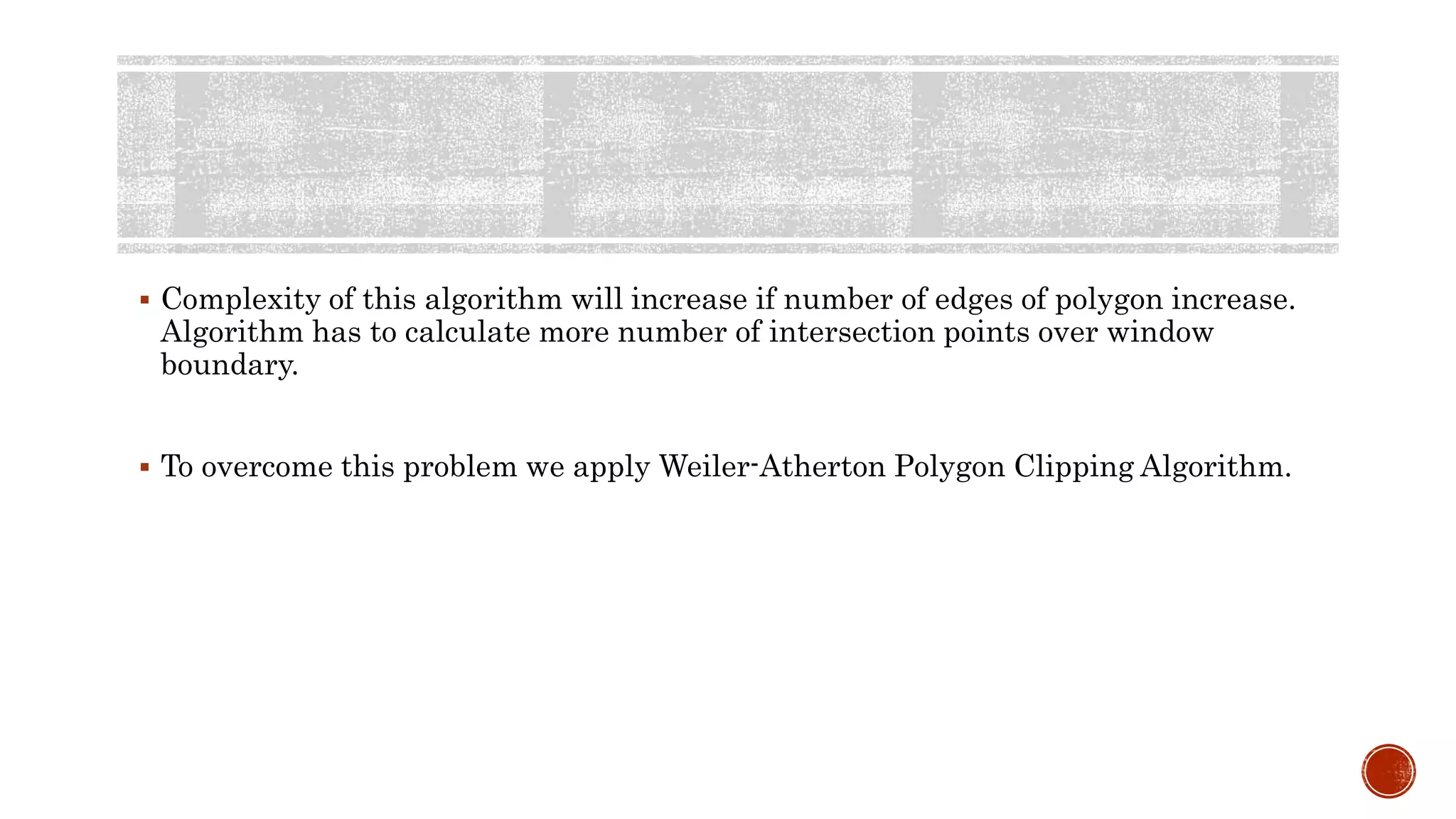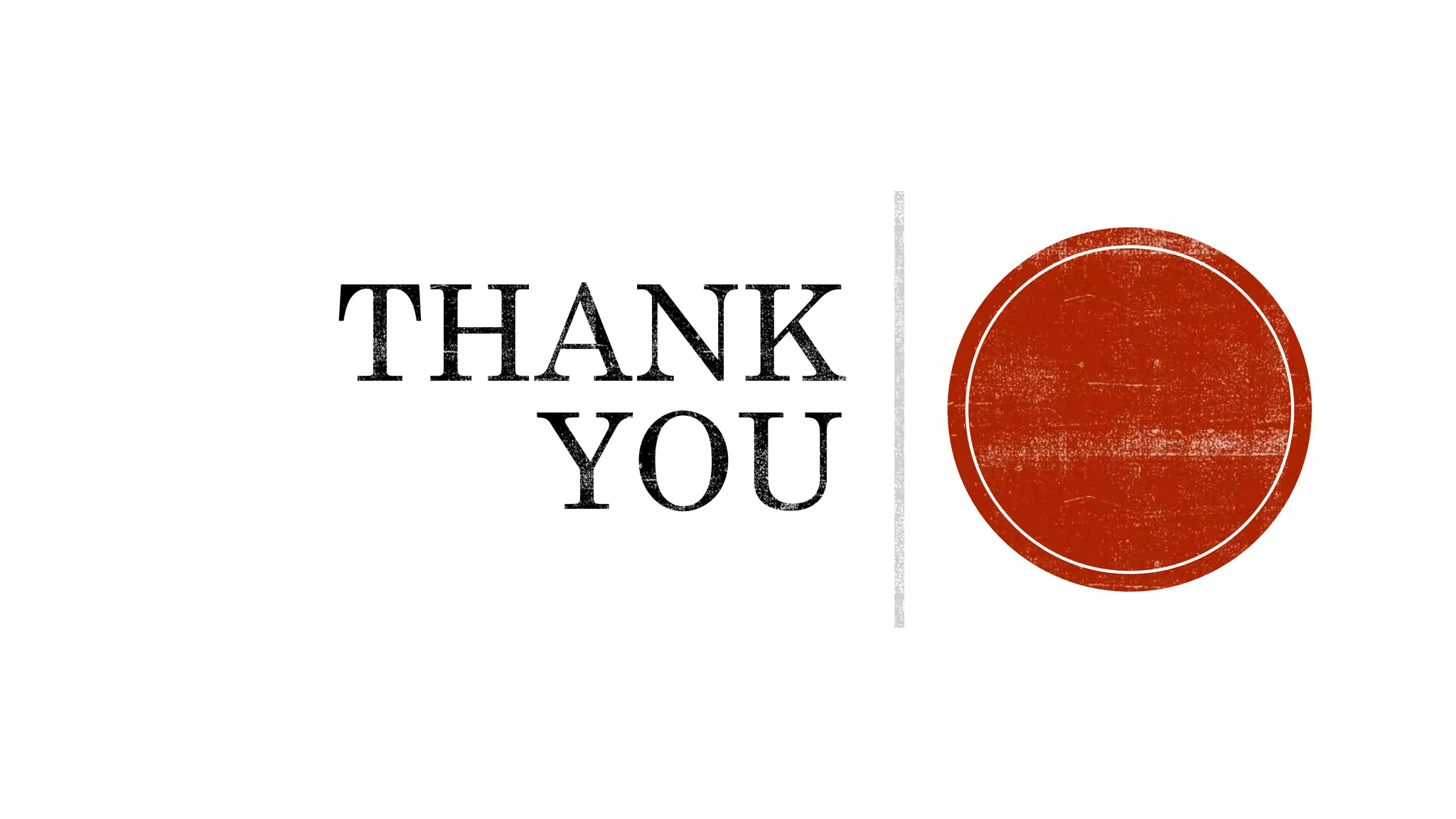Clipping algorithms identify portions of a picture inside or outside specified regions, requiring more than just line-clipping to generate closed polylines. The Sutherland-Hodgman algorithm effectively clips convex polygons, while the Weiler-Atherton algorithm is recommended for more complex concave polygons to avoid extraneous lines. Each polygon edge is assessed against each edge of the clip rectangle, potentially resulting in multiple polygons and an increase in the number of vertices after clipping.
